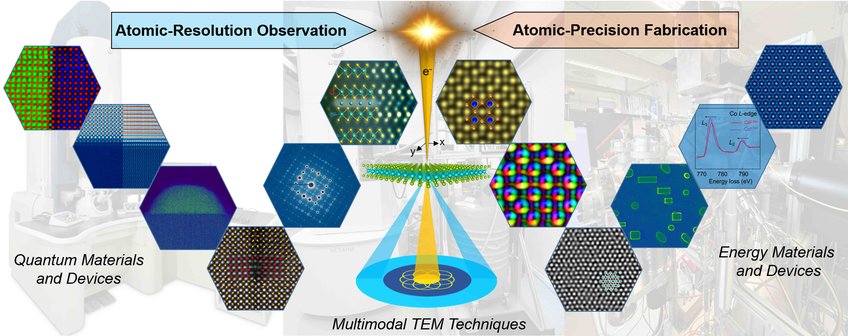
Dimensionality Dependent Materials Functionality
The "Dimensionality Dependent Materials Functionality" group is dedicated to advancing the atomic frontier of quantum and energy materials (devices) through the integration of multi-modal TEM studies with atomic resolution and epitaxial growth at atomic-layer precision. The primary research focus lies at the interface between atomic imaging and atomic fabrication, exploring how constituent atoms are assembled and interact in materials and devices fabricated with atomic precision, particularly at interfaces, and how these specific atomic structures define their functional properties. Additionally, we are interested in low-dimensional materials, including 2D materials, 1D nanowires, and 0D single atoms, for catalytic and energy applications. Key multi-modal TEM methods include quantitative STEM, core-loss EELS, vibrational EELS, 4DSTEM, cryogenic TEM, and AI-driven electron microscopy.
Our recent breakthroughs include novel symmetry-broken oxide interfaces and stacking-selective intercalation in epitaxial van der Waals heterostructures. Through this innovative research, we aim to unlock new functionalities and applications in quantum and energy materials, driving technological advances and expanding scientific knowledge.



